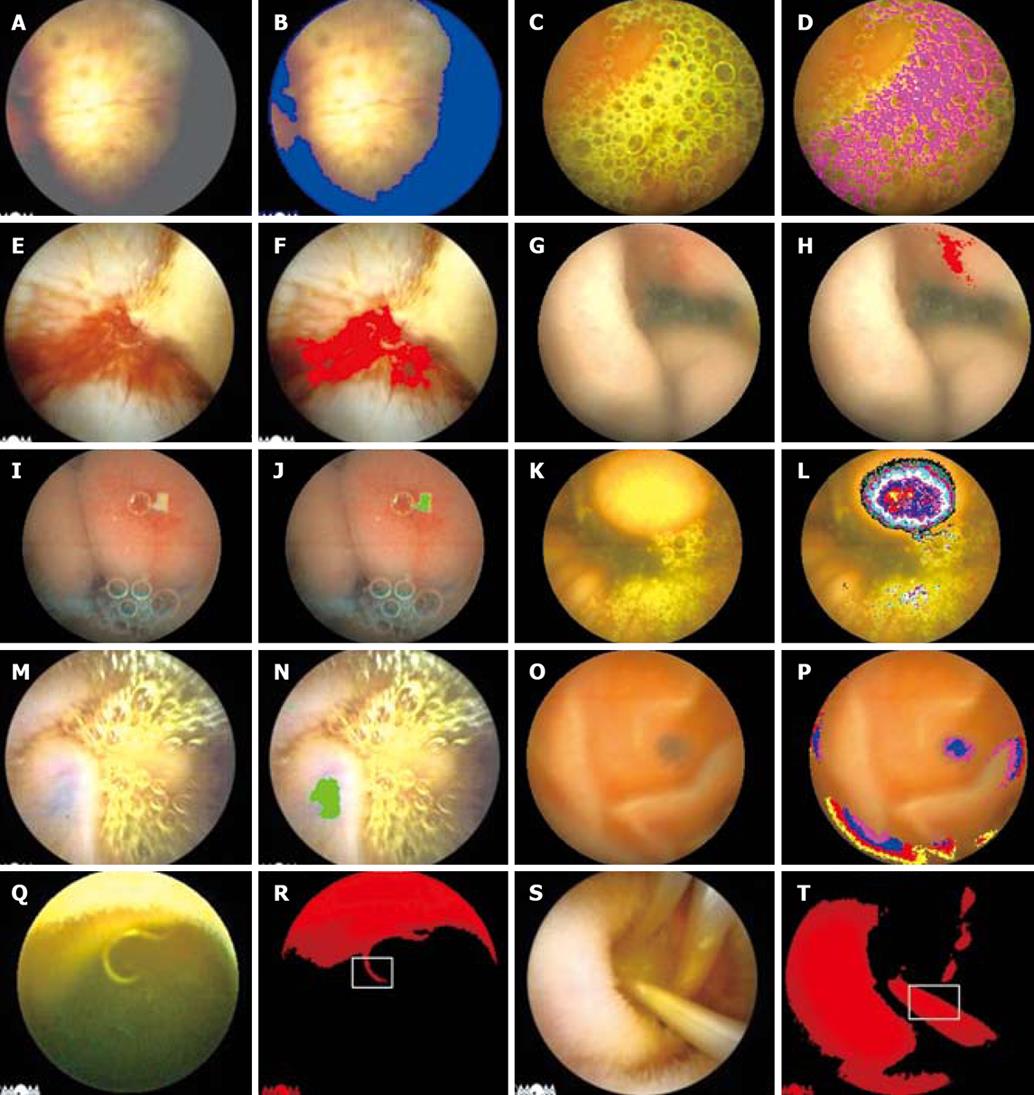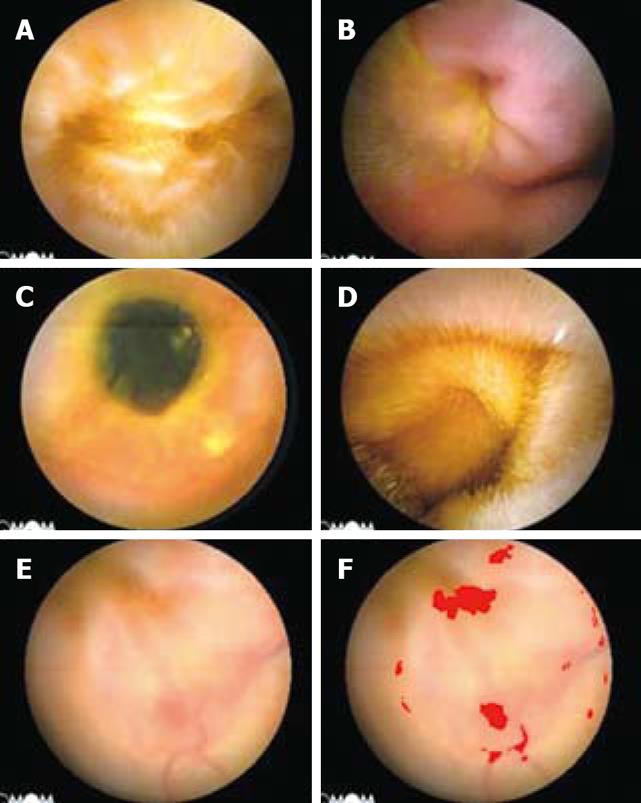Copyright
©2008 The WJG Press and Baishideng.
World J Gastroenterol. Dec 7, 2008; 14(45): 6929-6935
Published online Dec 7, 2008. doi: 10.3748/wjg.14.6929
Published online Dec 7, 2008. doi: 10.3748/wjg.14.6929
Figure 1 The screened results of enteric lesions by the IPS.
A: Space-occupying lesions; B: The blue area in the image for the “dark region”; C: The enteric bile; D: The purple area in the image for the enteric bile; E: The enteric blood (bleeding); F: The red area in the image for the enteric blood; G: Esoenteritis; H: The red area in the image for esoenteritis; I: Mucosal ulcer; J: The green area in the image for mucosal ulcer; K: Space-occupying lesions; L: Different coloring circle in the image for space-occupying lesions; M: Venous angioma in the bright background; N: The green area in the image for venous angioma; O: Venous angioma in the dark background; P: The loop-closed distribution of Gv of the venous angiomain image; Q: Parasites (hook worms); R: The image of red components (Rv > 150) and the curvature of the double limits in the pane calculated; S: Parasites (ascarides); T: The image of red components (Rv > 150) and the linearity of the double limits in the pane calculated.
Figure 2 The enteric lesions not being recognised by the IPS.
A: Enteric diverticulum; B: Intussusception; C: Enteric stenosis; D: Enteric lymphangiectasis; E: Angioectasia; F: The red area in the image for suspected bleeding, not angioectasia itself.
- Citation: Gan T, Wu JC, Rao NN, Chen T, Liu B. A feasibility trial of computer-aided diagnosis for enteric lesions in capsule endoscopy. World J Gastroenterol 2008; 14(45): 6929-6935
- URL: https://www.wjgnet.com/1007-9327/full/v14/i45/6929.htm
- DOI: https://dx.doi.org/10.3748/wjg.14.6929










